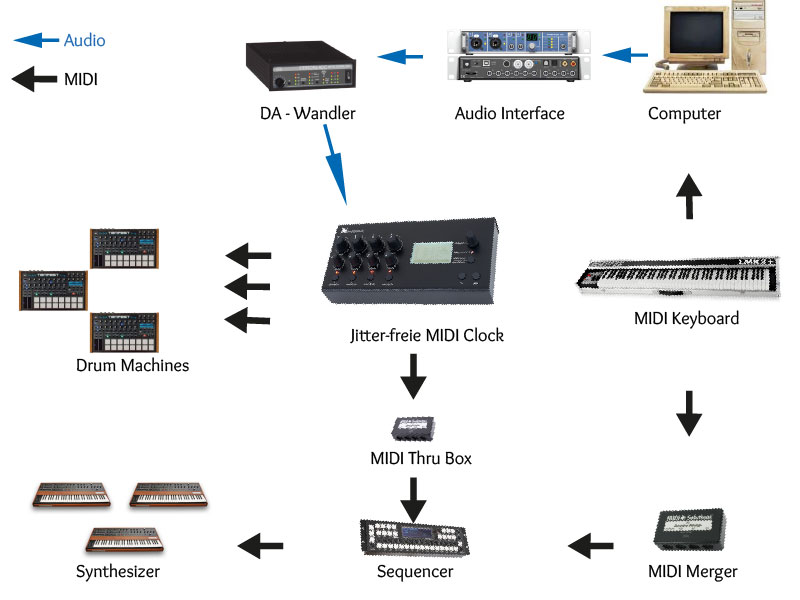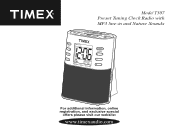

By slightly dragging one record just behind the other, DJs could create fat, chucky drum beats.
#Erm multiclock manual software#
E-RM presents Shift as a methodology for addressing hardware and software latency, but our reviewers found that it could be used to “chunk up the rhythm sections, like funky house DJs used to do on turntables.” What this particular reviewer is referring to was a technique used by DJs – before digital DJing and the addition of the SYNC button – when beat matching records. The Multiclock features the ability to Swing and Shift the MIDI timing via designated rotary knobs on each of the four channels. That said, E-RM did add a couple of features, which may keep it relevant into the future.
#Erm multiclock manual generator#
Our review unit came with USB installed and we found it to be a worthy upgrade, especially when you factor in the initial cost of the unit.Īlthough the E-RM prides the Multiclock on its stable clock generator with a 48 kHz sampling frequency, a couple of reviewers questioned whether or not this was simply overkill, knowing that PPQ (Pulses Per Quarter Note), would have a “greater affect on timing and feel than jitter.” While E-RM positions the Multiclock has being “50,000 times more accurate than the average DAW,” this may be less and less important as certain DAW’s are now supporting 14 bit resolution, and new MIDI specifications are being introduced to throughput more information at higher resolutions. In addition, the USB provides one virtual MIDI output for each channel and all commands are priority-merged with the Microclock’s sync. For about $50 more, you can have an optional, class-compliant USB MIDI connection installed that enables you to send MIDI commands from a Digital Audio Workstation to connected gear downstream when syncing to audio clock. As a nice bonus, the Multiclock allows you to save your channel settings as a preset for later recall with its own distinctive name. An analog LFO is available with various waveforms and a range of 0-5V for even more flexibility. The Analog clock signals are configurable in polarity, start/reset behavior and contain a flexible clock divider. Each channel can be configured to deliver MIDI Clock, DIN sync or analog clock. The Multiclock outputs four channels of MIDI, DIN or analog clock for synchronization. The fit and finish was also praised by our reviewers, which should be a nice pat on the back to E-RM, a small German manufacturer. First off, the build quality was cited by each of our reviewers as “excellent” and “substantial.” With a metal chassis, “beefy rubberized knobs,” clear silk-screening and a high-contract LED monochrome screen, the Multiclock is all business. Now they could have left well enough alone with this simple feat, but they decided to add a couple of creative features, which turns the Multiclock into a “surprising amount of fun,” according to one of our reviewers.īut before we get to the creative facets, let’s take a deeper look at the Multiclock. E-RM aims to do this for your MIDI, DIN and analog pulse sync gear, by providing their singular clock tech to accurately marry all your gear, no matter what the vintage.

When setup correctly, the results can be striking, just see our Black Lion Audio Microclock III review to learn more. For example, sophisticated studios all employ a single, dedicated Word Clock generator to accurately lock digital gear, which depends on sample accurate data. This is very important to understand and if you’re familiar with Word Clock, the concept is similar. E-RM states that it “guarantees absolutely tight clock signals with ☑ sample of jitter” and our reviewers found the Multiclock did maintain a “stable and reliable sync, even when burdened with multiple devices running different sync tech.” E-RM achieves this by delivering its timing via Audio Sync Track, instead of a MIDI Clock signal, thus when installed in your kit, the Multiclock becomes the de facto clocking source, not your DAW. The Multiclock builds on E-RM’s first product, the Midiclock, in several ways, but the core competency of providing solid MIDI Clock, DIN Sync (Sync24) and analog clock pulses is where everything begins.


 0 kommentar(er)
0 kommentar(er)
